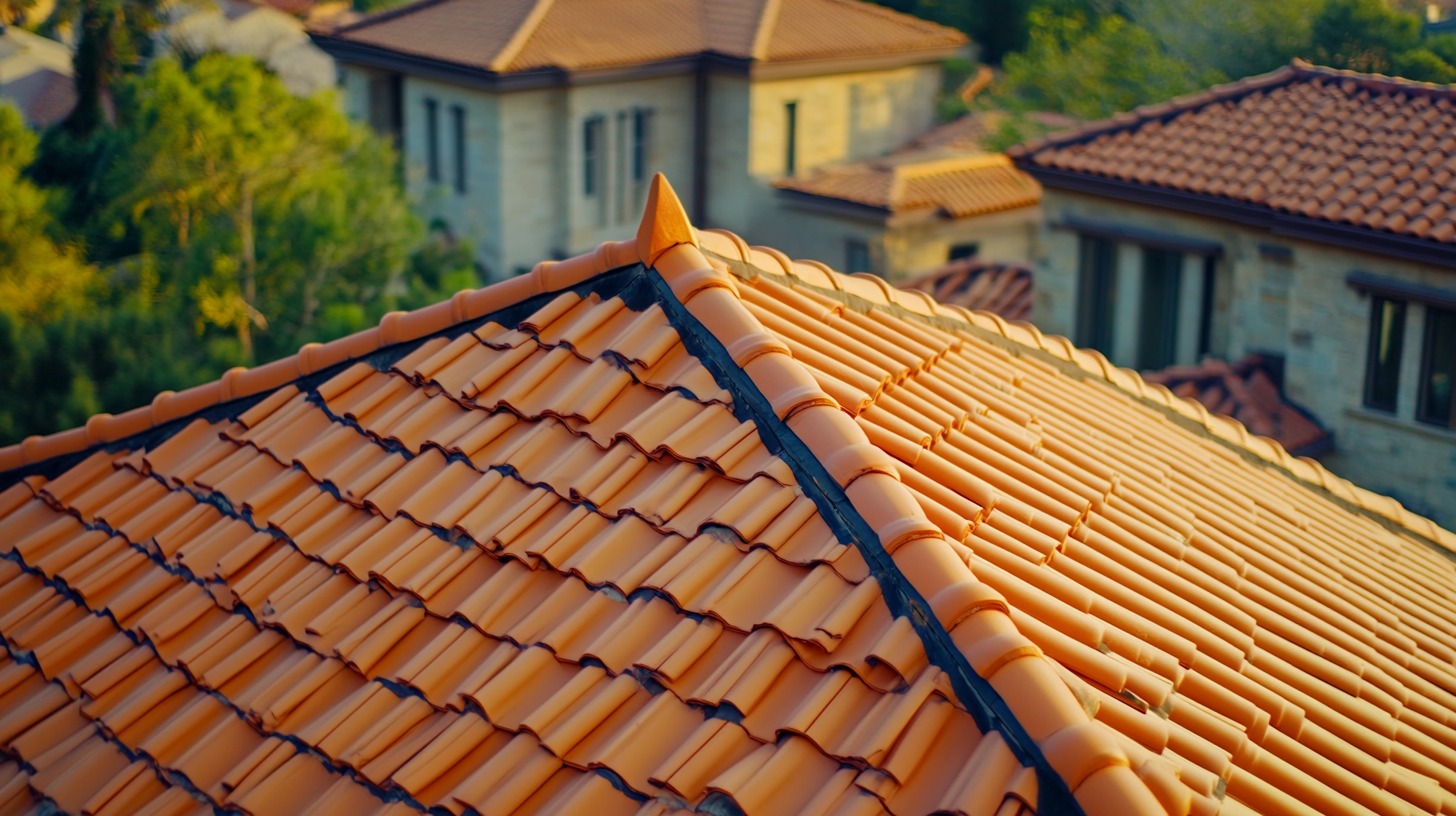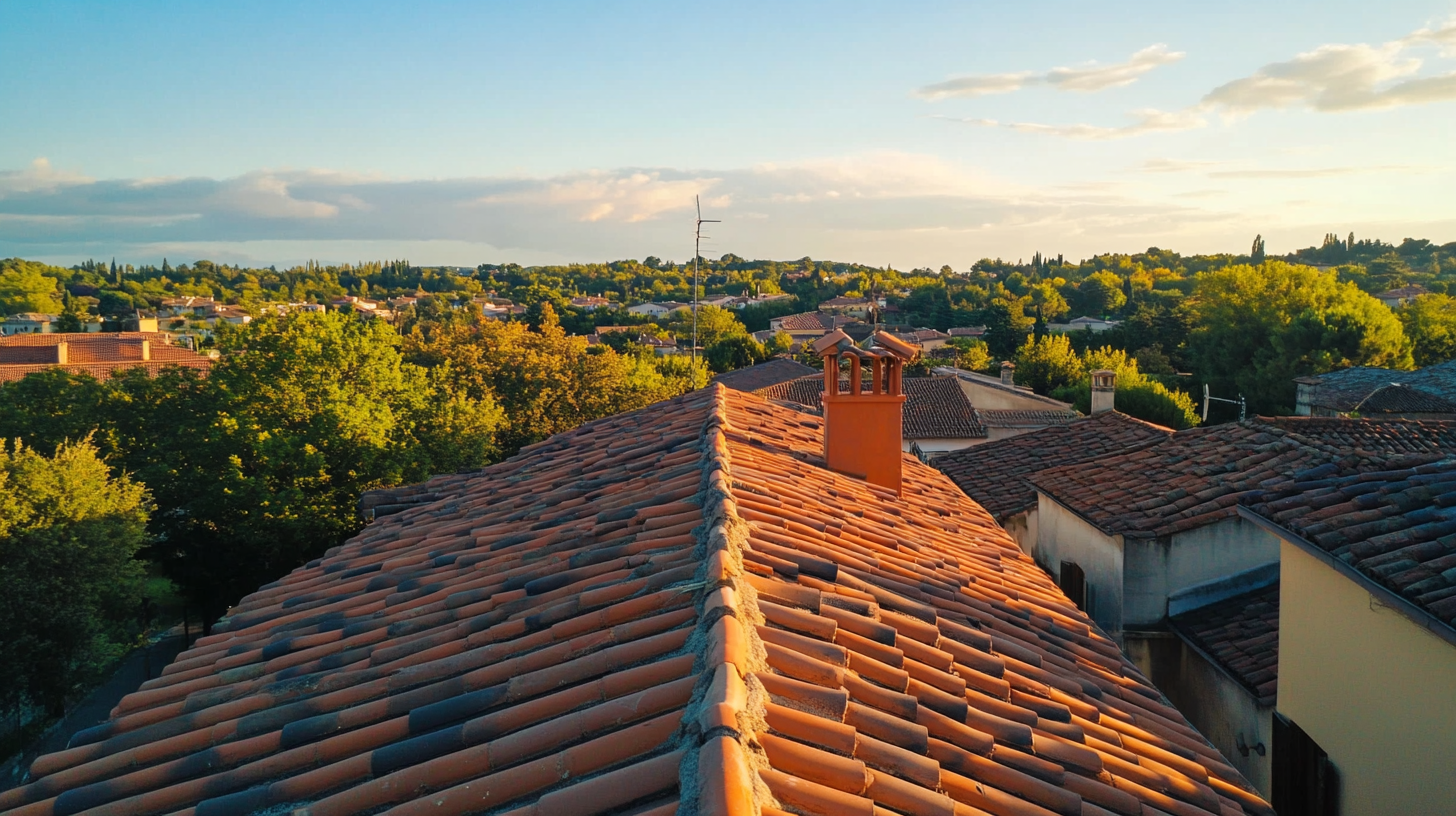
Leave Your Message
-
Phone
-
E-mail
-
Whatsapp

In an era where climate change and natural disasters have become increasingly prevalent, the construction industry faces a critical imperative: ensuring the safety and resilience of buildings. One of the key components in enhancing structural safety is the use of fire retardant roof tiles. According to a report by the National Institute of Standards and Technology (NIST), building fires have caused over $10 billion in property damage annually in the United States alone, underscoring the importance of fire-resistant materials. Fire retardant roof tiles not only provide essential protection against wildfires but also significantly reduce the risk of fire spreading to interior spaces, making them a crucial investment for homeowners and developers alike.
As global sourcing becomes ever more vital for the construction sector, strategically identifying and procuring high-quality fire retardant roof tiles is essential. A recent study by MarketsandMarkets projected that the global fire-resistant construction materials market will grow from $130 billion in 2020 to over $215 billion by 2025, with an increasing focus on sustainable and compliant building materials. This blog aims to provide strategic insights into sourcing fire retardant roof tiles, emphasizing the importance of quality, compliance, and innovation in meeting both safety standards and market demands.

When sourcing fire retardant roof tiles, understanding the key properties of fire retardant materials is essential. Fire retardant materials are designed to slow the spread of flames and reduce the release of smoke and toxic gases during a fire. These properties are crucial for enhancing the overall safety of a building and can significantly impact a structure's performance during a fire incident. Crucial factors to consider include the material's ignition temperature, flame spread index, and smoke development rating.
Moreover, adherence to industry standards is paramount in ensuring that fire retardant materials meet safety requirements. Various standards, such as those set by the National Fire Protection Association (NFPA) and Underwriters Laboratories (UL), provide guidelines for testing and rating fire retardant products. These standards help manufacturers produce materials that are not only effective but also reliable. Engaging with suppliers who comply with these standards can provide peace of mind and ensure the integrity of the materials used in construction.
In conclusion, proper knowledge of fire retardant materials and their associated standards is indispensable for making informed sourcing decisions globally. By prioritizing these insights, architects, builders, and property owners can enhance fire safety and protect their investments effectively.
| Property | Description | Standards | Recommended Materials |
|---|---|---|---|
| Ignition Resistance | Ability to withstand ignition from external sources. | ASTM E108 | Fiber Cement, Metal Tiles |
| Thermal Conductivity | Rate at which heat is transferred through material. | ISO 8302 | Clay Tiles, Slate Tiles |
| Smoke Development | Measurement of smoke produced during combustion. | UL 723 | Ceramic Tiles, Concrete Tiles |
| Durability | Resistance to weathering and fire exposure. | ASTM D1670 | Metal Tiles, Concrete Tiles |
| Environmental Impact | Assessment of sustainability and recyclability. | ISO 14021 | Recycled Metal Tiles, Eco-Friendly Materials |
When it comes to sourcing fire retardant roof tiles globally, understanding diverse market dynamics is crucial for manufacturers and suppliers. The global roof tiles market is projected to reach USD 21.65 billion by 2027, growing at a CAGR of 4.1% from 2020, as per a recent report by Mordor Intelligence. This growth highlights the increased focus on safety standards in construction materials, especially in regions prone to wildfires and other environmental risks.
Navigating these diverse markets requires an in-depth analysis of local regulations and safety requirements. For instance, the European Union has stringent standards regarding fire safety in building materials, which necessitate compliance from all suppliers. In contrast, the North American market puts a strong emphasis on sustainability and eco-friendliness, driving the demand for innovative materials that meet both safety and environmental standards. A comprehensive understanding of such regional variations aids suppliers in tailoring their product offerings effectively.
Moreover, leveraging technology in sourcing strategies can further enhance efficiency. Advanced analytics tools enable companies to gauge market demands more accurately and optimize their supply chains accordingly. As highlighted in a report by ResearchAndMarkets.com, the incorporation of smart technologies in manufacturing processes can lead to a reduction in production costs by up to 25%. Integrating these insights into global sourcing strategies not only ensures compliance but also enhances the competitive edge of businesses in the roof tile sector.
This chart illustrates the market demand for fire retardant roof tiles in different regions, emphasizing strategic sourcing opportunities and safety maximization across diverse markets.
When sourcing fire retardant roof tiles on a global scale, evaluating suppliers is crucial to ensure quality and reliability. The first key criterion is compliance with international safety standards. Manufacturers should possess certifications such as UL 790 or ASTM E108, which provide assurance that their products meet rigorous fire safety requirements. This not only protects the integrity of the building but also provides peace of mind to consumers and builders alike.
Another essential factor to consider is the supplier's track record in the industry. A reliable supplier should have a history of producing fire retardant products that have performed well in various environmental conditions. This can be assessed through customer testimonials, case studies, and overall market presence. Additionally, engaging with suppliers who offer transparent information regarding their production processes and sourcing of materials can further enhance trust and confidence in their products.
Lastly, consider the supplier's commitment to innovation and product development. The fire safety landscape is constantly evolving, and suppliers who invest in research and development are more likely to provide cutting-edge solutions. Regular updates on product offerings and enhancements can reflect a supplier's dedication to improving safety features, thereby facilitating better decision-making for those in the construction industry. Prioritizing these evaluation criteria can ensure that the selected fire retardant roof tiles not only comply with safety standards but also contribute to long-term safety and performance.
When sourcing fire retardant roof tiles, particularly in a global marketplace that is increasingly interconnected, businesses must prioritize rigorous quality assurance practices. The importance of this cannot be overstated, especially as large-scale production locations like Jinjiang, known for its manufacturing strength, enhance their international reach through initiatives such as dedicated logistics routes and overseas distribution centers. These movements not only underscore the growing demand for high-quality roofing materials but also highlight the need for manufacturers and distributors to maintain strict quality control protocols throughout the procurement process.
In the procurement of fire retardant roof tiles, establishing robust relationships with suppliers is key. Companies should engage in comprehensive assessments of potential suppliers, ensuring they adhere to internationally recognized safety and quality standards. Regular audits, on-site visits, and adherence to third-party certifications can facilitate this process. This proactive approach helps mitigate risks associated with sourcing inferior products, which could ultimately compromise safety and compliance.
Moreover, adopting a transparent supply chain visibility can greatly enhance quality assurance efforts. Leveraging technology to track materials from production to delivery not only fosters greater accountability among suppliers but also allows businesses to quickly identify and remedy issues that may affect the quality of the tiles. As the global landscape of building materials continues to evolve, prioritizing quality in the selection of fire retardant roof tiles will be essential to maximizing safety and ensuring enduring value in construction projects.

Ensuring regulatory compliance in the sourcing of fire retardant roof tiles is paramount for businesses determined to prioritize safety and quality in their construction projects. Different countries and regions have specific regulations concerning fire safety in building materials. These regulations often stipulate the standards that fire retardant products must meet to be deemed safe for use. Understanding these legal requirements not only protects the end-users but also shields businesses from potential liabilities due to non-compliance.
A strategic approach toward sourcing requires thorough research into the compliance standards in target markets. Manufacturers and suppliers must be well-versed in the relevant certifications, testing procedures, and documentation needed to verify that their fire retardant tiles meet local and international safety standards. Engaging with local authorities, industry experts, and compliance consultants can provide valuable insights into navigating these complex regulations.
In addition to adhering to safety standards, strategic sourcing of fire retardant roof tiles should involve evaluating the manufacturing processes of suppliers. Assessing their quality control measures, sustainability practices, and previous compliance records can ensure that the sourced materials are reliable and safe for deployment. By prioritizing regulatory compliance at every stage of the sourcing process, companies can significantly enhance safety outcomes while maintaining a competitive edge in the market.
